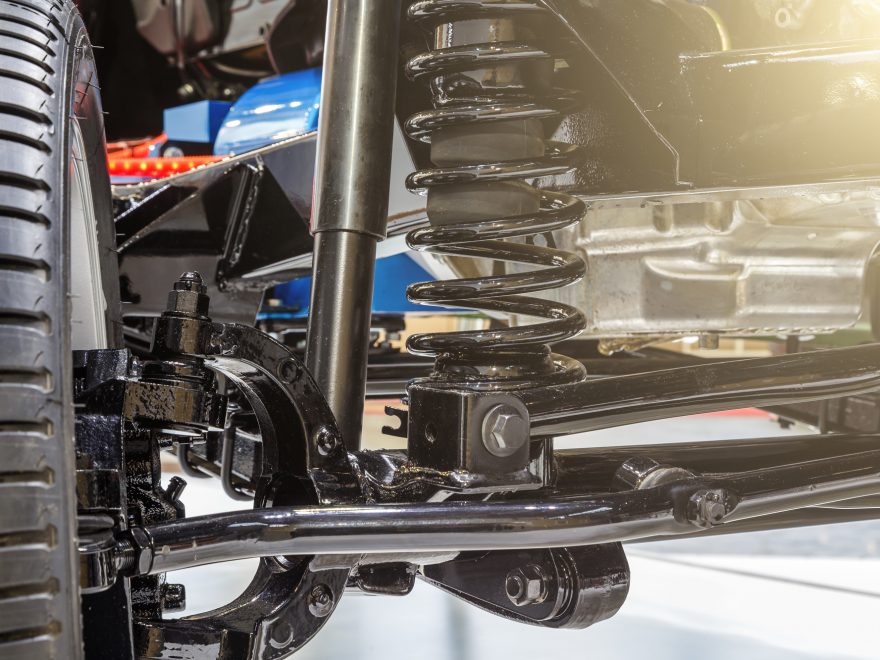Like any other part of your Nissan Versa, your shocks will wear down over time as you continue to drive your vehicle.
But how long to shocks last?
Unfortunately, there is no easy answer to that question. It comes down to several different factors that can change from one car to the next. So how do you know when you need new shocks?
Keep reading to learn more about shocks and when you need to replace them.
Find Your Online Car Repair Manual Today! ->>
What Are Shocks and Struts?
Shocks and struts are both parts of the cars suspension system. While most people tend to use the two terms interchangeably, they have different roles and do different things.
Struts hold the body of the car up. If you took the struts away, the car would fall to the ground. They also provide support for the suspension springs and impact a car’s steering alignment.
The shocks absorb the bumps on the road. When you drive over a pothole, the shocks level the car and keeps the body from bouncing around as you drive. If you took the shocks away, the car could still drive. The drive would just be very bumpy.
Most cars have a pair of struts at the front two tires and a pair of shocks at the back two tires. Cars made before 1995 might have shocks at all four tires.
How Long do Shocks Last on a Nissan Versa?
There is no easy answer to this question. The shocks on your car can wear out at different speeds depending on how you drive it. Before you can figure out how long your shocks should last, you have to consider things like how much you drive the vehicle, what kind of roads you drive it on, and whether or not you’re a careful driver.
These things make it impossible to give an exact time frame for the lifetime of Nissan Versa shocks.
For example, if you spend most of your time driving on smooth, high-quality pavement, the shocks in your car can last up to 10 years. But seeing as that’s not possible for many people, a more realistic timeline would be four to five years.
But again, a reckless driver who spends time on roads full of cracks, ridges, and potholes can wear their shocks down even faster. The more the car bounces, the more wear the shocks take, and the quicker you’ll have to replace them.
Things like weather can play a part in a shocks lifetime as well. Things like snow, ice, and road salt can speed up the corrosion process on the shocks and shorten their overall life expectancy.
When to Replace Your Shocks
Many people use mileage to decide when it’s time for you to replace your shocks. But this isn’t an accurate method either.
Why?
Because a person who drives their car 50,000 miles on smooth pavement won’t have nearly as much wear and tear on their shocks as someone who drives 50,000 miles on cracked or rough pavement.
That said, it’s a good idea to use mileage to set up a full suspension inspection.
After you’ve driven 40,000 to 50,000 miles on your vehicle, you should have a professional inspect your shocks and struts. They’ll be able to spot any damages, such as general wear or hydraulic fluid leaks.
If your shocks are still in good condition after 50,000 miles, continuing having a professional inspect them at least once a year. That will give you enough time to replace them should a problem arise.
Any manufacturer who says you have to replace your shocks after 50,000 miles is more focused on their own benefit than yours.
What to Know About Replacing Your Shocks
New shocks can be expensive, so don’t replace them every time you have them inspected. Although this ensures you’ll never have any problems with them, the cost can add up pretty quick.
In most cases, you’ll replace both shocks at the same time. Even if there’s only a problem with one, they tend to come in a set. This also allows the shock on each side to handle the same.
As soon as you notice any problems with your shocks, you should replace them right away. They play a big part in the safety of your vehicle. Not only will the ride be more uncomfortable, your engine can be subjected to damaging amounts of force.
How Much Do New Shocks Cost?
The cost of new shocks can vary somewhat depending on where you buy them. And the price for shocks and struts are both different.
Struts are much more expensive. For example, a new set of struts can cost over $800 including installation fees.
Shocks don’t tend to cost more than $200. While that might not sound like a lot of money, it can add up if you replace them again and again before you need to.
Remember, stick with an inspection first. After you know for sure something is wrong with your shocks, you can look into replacing them.
Warning Signs That Mean You Need to Get New Shocks
There are a few easy ways you can tell your shocks are on their way out. As soon as you notice any of these signs, take your car to a professional so they can inspect your suspension system.
1. Bouncing
Your car’s suspension system contain coil springs. These are the things that make your car bounce when they drive over a bump or crack in the road. Your shocks are what absorbs the shock of the bounce so the springs don’t keep bouncing continuously. If you run over a bump and your car keeps bouncing as you drive down the road, that’s a good sign your shocks aren’t doing their job.
2. Tire Cupping
As your shocks get worse, your tires can literally bounce up and down while you’re driving. Small pieces of rubber tear off your tires every time they hit the road. You can find out if your tires have been cupping by checking the treadwear. Cupped tires have smooth patches dispersed throughout normal tread.
3. Nose Dives
Nose dives involve your car diving forward every time you break. If your car does this, you need to replace your shocks. You can also tell your shocks are worn down if the back of your car “squats” when you hit the gas. Your car might also lean to one side when you turn.
Replacing Your Nissan Versa Shocks
So how long do shocks last?
It all depends on how and where you drive the car. For most cars, you don’t have to worry about replacing your shocks for at least four to five years. However, it’s a good idea to have a professional inspect your suspension system after 50,000 miles.
Think you might have a shock problem but not sure where to take your car? Here are a few tips that’ll help you find the best auto body shop.







